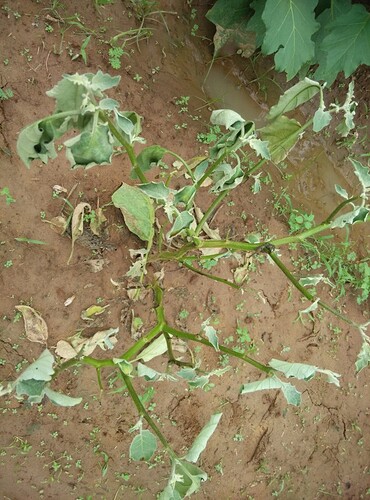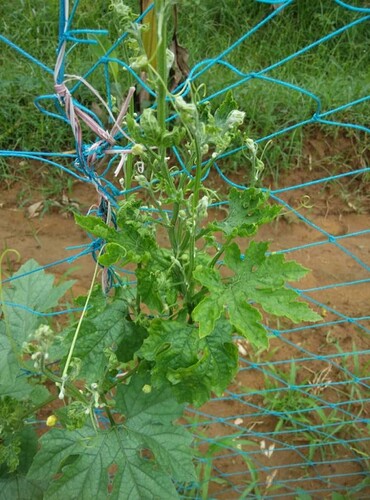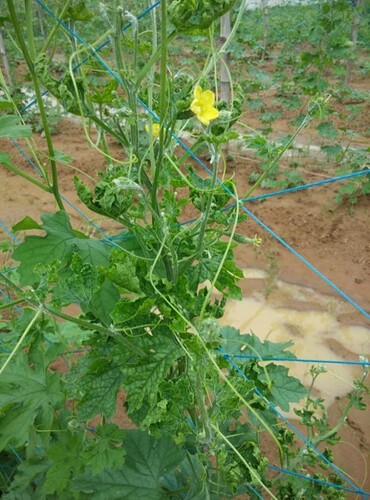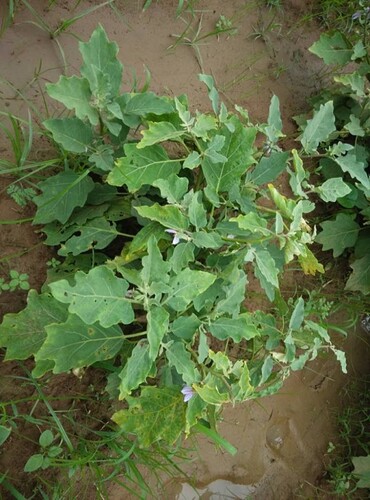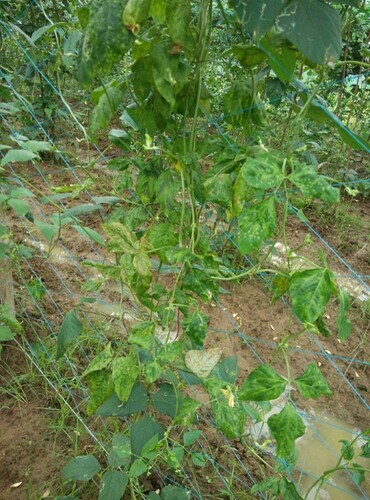Planofix is nothing but NAA ( Napthalene Acetic acid ) sort of plant hormone and GA3 is just another type of hormone that are involved in plant growth and development …
Both NAA and GA3 spray show some result in enhanced yield compared to non treated Brinjal field …Among these two , NAA show comparatively better result @40 ppm dose ( 1 ml in 25 lit water ) .it is sprayed on 45th, 60 th and 90 th day after planting …
How the growth Hormone affect enhanced flowers ?
The brinjal produce 4 types of flowers
1.Long style flowers
2.Medium style flowers
3.Short style flowers
4.Pseudo style flowers
The first two kind of flowers really give harvest and other two aborts and limit the yield
When you spray any of these two plant hormone , it converts all the flowers into fruits in the first two categories and also convert third category flowers into productive flowers by increasing the length of style .
In sum total , the total number of productive flowers are more in case of the brinjal field sprayed with NAA or GA3 …
In brinjal , the plant initiate hormonal changes inside the plant in about 25 to 30 days after transplanting and prepare the plant for producing flowers but in fact we see real flowering in about 45 to 55 days after planting …Hence we need to spray any of these two hormone by around 25 th day after planting and continue spraying for next tow rounds at weekly or 10 days interval …
Compared to above two types of hormones , one most effective synthetic hormone called Triacontanol is the best hormone in inducing profuse flowering in Brinjal …
Spray Triacontanol at the above mentioned days @ 2PPM concentration ( 1 ml in 500 lit water ) and do NAA spray at 45, 60 and 90 th day …Really you will see highest number of flowering …
Triacontanol is an alcohol type hormone that really produce tremendous effect in flowering . It is the reason why the farmers in Punjab, Hariyana and around Delhi use more alcohol in Brinjal …
They buy alcohol from cheap source and drench it around root zone that makes all the brinjal ghost like that drinks more water and uptake most of the mineral nutrients from soil and part of the alcohol that reaches plant system induce increased production of flowering hormone called florigen that keep the brinjal plant producing flowers continuously
Also the Alcohol drenching to the brinjal increase the microbial activity in the rhizosphere ( Area around roots ) that also produce more growth hormones like GA3 that is used by plants…
But never spray alcohol on foliage as it kills chlorophyll and negatively impact photosynthesis …
But since Alcohol price is increasing at galloping speed , Brinjal farmers could not afford to pay for the alcohol …so as alternative to alcohol , you can buy mollasses from nearby sugar factory that are available free of cost and keep it fermented for about 15 days and then you can drench it around roots that does similar function as direct alcohol…
If you sincerely follow all the guideline , sure you will keep your brinjal into continuous flowering that will produce more than 100 MT of fruits in about 9-10 months time…
Summary
1.Triacontanol hormone at 25,32 and 39 days
2.Planofix ( NAA ) spray at 45, 60 and 90 th day
3.Alcohol /Mollasses soil drenching
